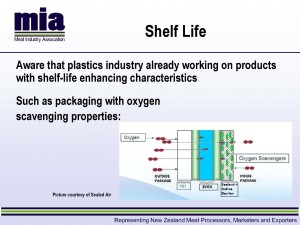 Allan Barber has been speaking to Silver Fern Farms (SFF)’s chief executive Keith Cooper, following this afternoon’s announcement of a big loss for the co-operative for the year ending 30 September 2012. In his latest blog post, Barber reports finding Cooper bullish in spite of the loss.
Allan Barber has been speaking to Silver Fern Farms (SFF)’s chief executive Keith Cooper, following this afternoon’s announcement of a big loss for the co-operative for the year ending 30 September 2012. In his latest blog post, Barber reports finding Cooper bullish in spite of the loss.
Cooper confirmed the effect of lamb on the season’s losses, saying SFF had been comfortable with what it was paying for lambs price before Christmas. Market demand had suddenly stopped dead in February because of the market price and companies had all been hit by exposure to expensive stock, unable to reduce the price quickly enough. The net result was too much product going into overvalued inventory which resulted in a write-down of $25.6 million at balance date.
The company’s media release has highlighted the same reasons as Alliance for the loss, says Barber – unjustifiably high procurement cost, high dollar, sudden drop in market demand, inventory writedown – but made very positive reference to the future outlook. It has made significant new investments, including the Te Aroha rebuild, $8 million of new marketing initiatives and $4 million commitment to FarmIQ.
In the current year, SFF intends to invest a further $22.6 million in brand development, marketing initiatives and FarmIQ. According to chairman Eoin Garden, this “clearly demonstrates our confidence in, and commitment to, the growth path we have charted for our company” notwithstanding the poor performance during the year ended September.
High inventories are already being substantially sold down to a point where the company’s inventory level is already much closer to normal for this time of the year, lonely six weeks after balance date. As will be the case with Alliance the equity ratio will have already benefited from this.
The suspicion that SFF’s loss would not be a large as that posted by Alliance because of a greater proportion of beef in its kill proved to be correct. Nor did SFF have to take any plant closures on the chin. CEO Keith Cooper said the company’s footprint was consistent with livestock numbers and no further closures were under review.
In answer to a question about further industry rationalisation Cooper said SFF had already taken over two small companies, Frasertown and Wallace, and he was always in favour of aggregation. This invariably involved smaller companies being acquired by one of the big four. However it was ultimately up to farmers to decide on the industry’s structure, because industry rationalisation only lasted so long before a new processor emerged, which farmers would then typically support.
The general mood in the meat industry, confirmed by SFF, is positive for the new season. Procurement prices are aligned with the market, livestock volumes are stable, even recovering slightly, and capacity is fairly well balanced with throughput.
In conclusion, Keith Cooper said while 2011/12 was a poor year financially, strategically it was a progressive one. “2012 marked a continuation of our unwavering commitment to executing our Plate-to-Pasture strategy. This is a progressive and long term plan, which demands perseverance and determination, to ultimately generate sustainable value for our farmer-partners, by meeting the modern consumer’s requirements.”
This article appears also at Allan Barber’s Barber’s Meaty Issues. Read more …





